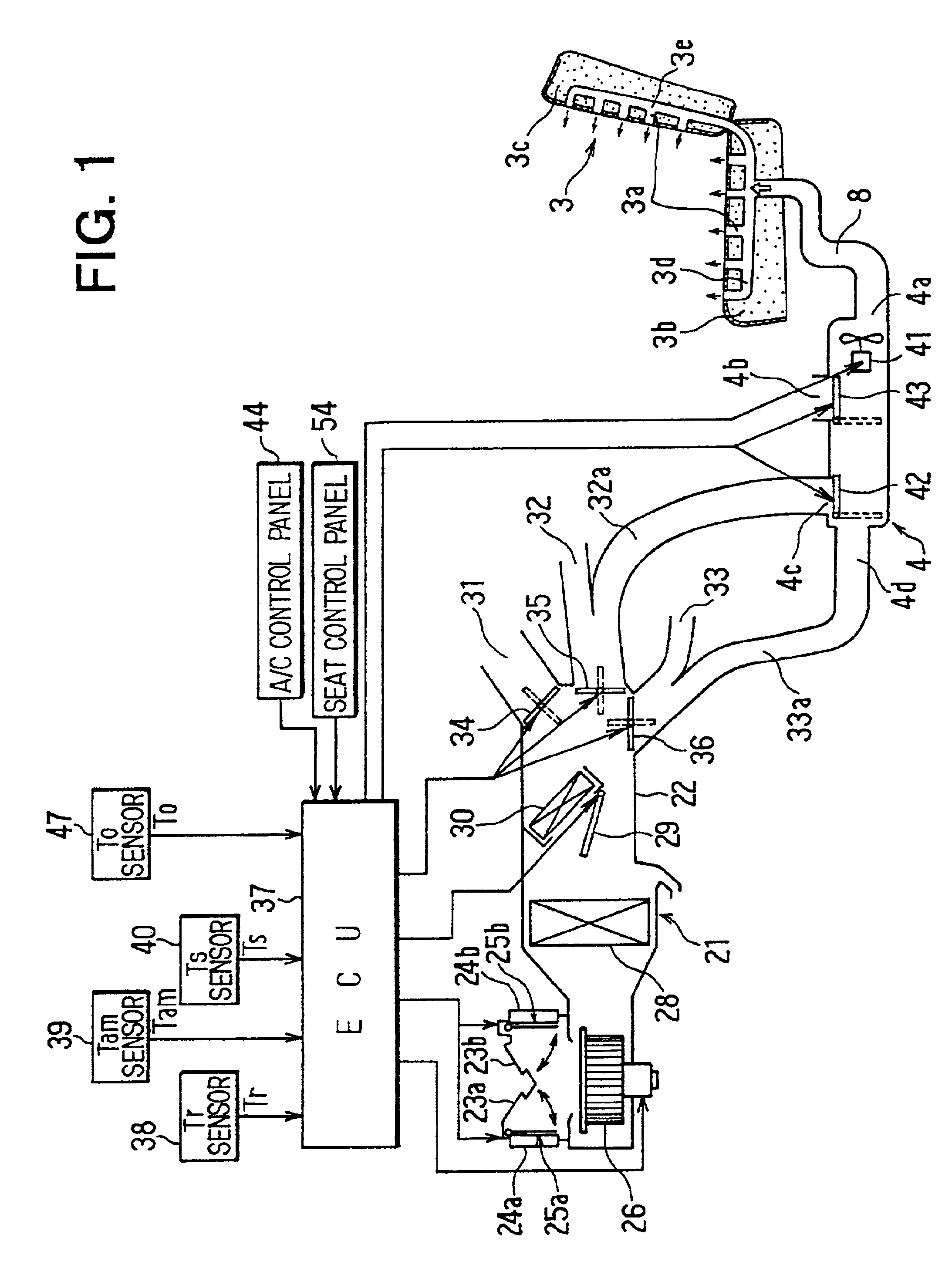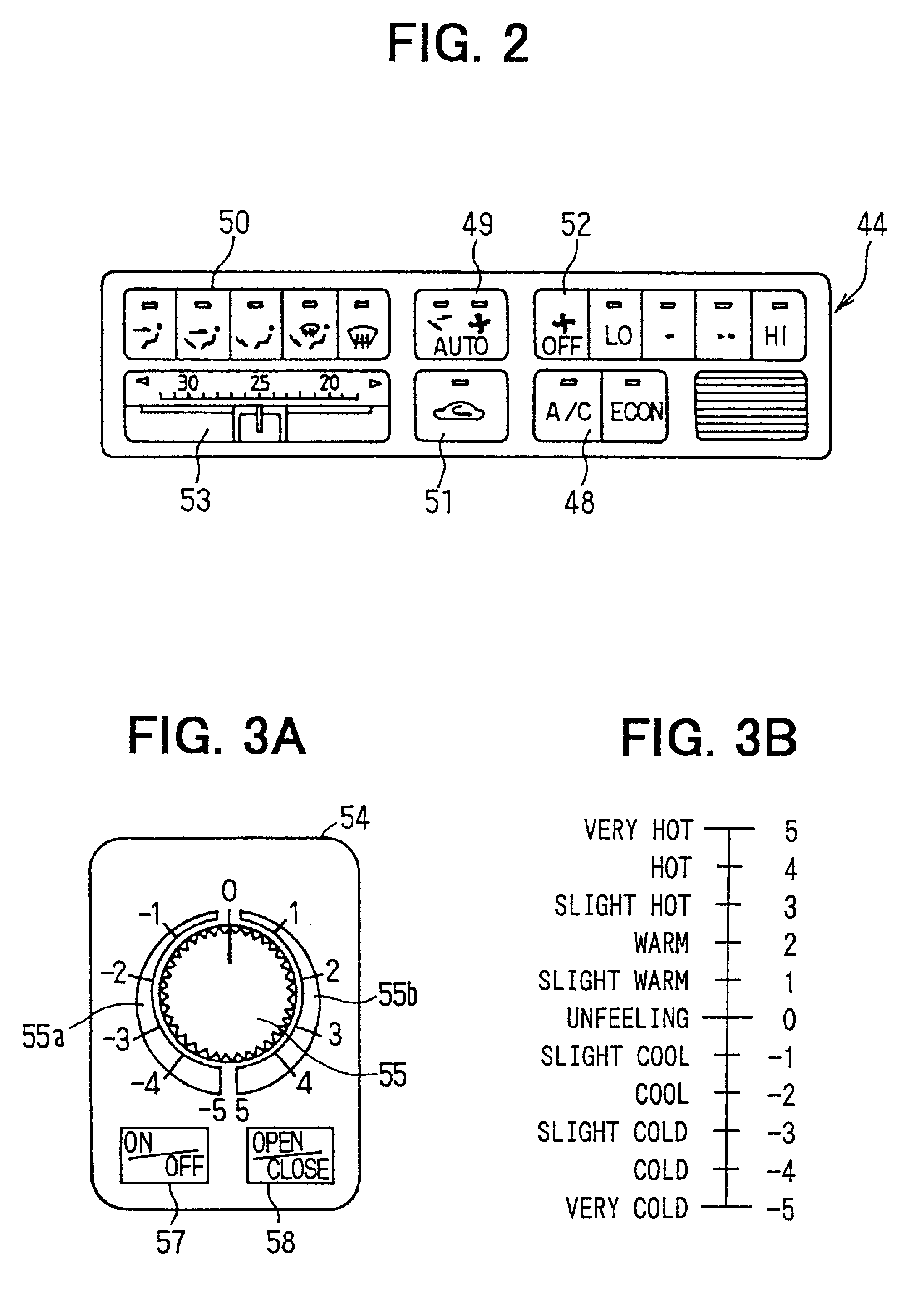Vehicle air conditioning system with seat air conditioning unit
a seat air conditioning and air conditioning technology, applied in ventilation systems, heating types, instruments, etc., can solve the problems of excessive cooling of seats, excessive air conditioning ability of seat air conditioning units, and excessive hea
- Summary
- Abstract
- Description
- Claims
- Application Information
AI Technical Summary
Benefits of technology
Problems solved by technology
Method used
Image
Examples
first embodiment
A vehicle air conditioning system according to the present invention will be described hereinafter with reference to FIGS. 1 to 10. First, a space air conditioning unit 21 will be described with reference to FIG. 1. An air duct 22 is provided with an outside air intake openings 23a and 23b for taking in outside air (fresh air) outside a passenger compartment and inside air inlets 24a and 24b for taking in inside air (air inside a passenger compartment at its upstream portion. An mixing amount ratio between inside air and outside air is adjusted by adjusting the respective positions of inside / outside air doors 25a and 25b.
A blower 26 is disposed in the air duct 22. An evaporator 28 of a refrigerant cycle system (not shown), an air mixing door 29 and a heater core 30 through which engine cooling water is circulated are disposed in the air duct 22 at a downstream air side of the blower 26, in this order. An air mixing ratio between air passing through the heater core 30 and air bypassi...
second embodiment
A second preferred embodiment of the present invention will be now described with reference to FIGS. 13-22. In the second embodiment, a space air conditioning unit 100 can be applied to a vehicle having an engine for vehicle travelling or an electrical motor for vehicle travelling. The space air conditioning unit 100 is controlled by a space air-conditioning control unit (hereinafter, referred to as "space ECU") 102 so that a temperature of a passenger compartment can be maintained at a set temperature.
A seat air conditioning unit 104 is disposed under a front seat 103, for example, so that conditioned air of the space air conditioning unit 100 is introduced into the seat air conditioning unit 104. Components of the seat air conditioning unit 104 are controlled by a seat air-conditioning control unit (hereinafter, referred to as "seat ECU") 105 so that a thermal sensation feeling (level) of a seat surface of the front seat 103 can be always maintained at a desired thermal sensation ...
PUM
 Login to View More
Login to View More Abstract
Description
Claims
Application Information
 Login to View More
Login to View More - R&D
- Intellectual Property
- Life Sciences
- Materials
- Tech Scout
- Unparalleled Data Quality
- Higher Quality Content
- 60% Fewer Hallucinations
Browse by: Latest US Patents, China's latest patents, Technical Efficacy Thesaurus, Application Domain, Technology Topic, Popular Technical Reports.
© 2025 PatSnap. All rights reserved.Legal|Privacy policy|Modern Slavery Act Transparency Statement|Sitemap|About US| Contact US: help@patsnap.com



